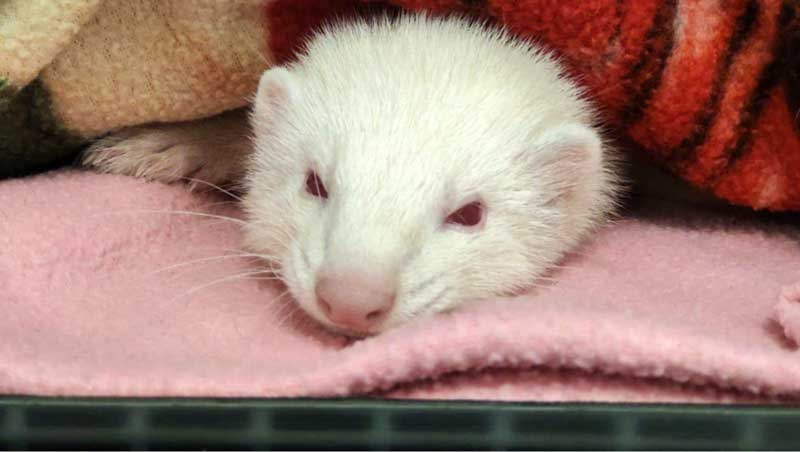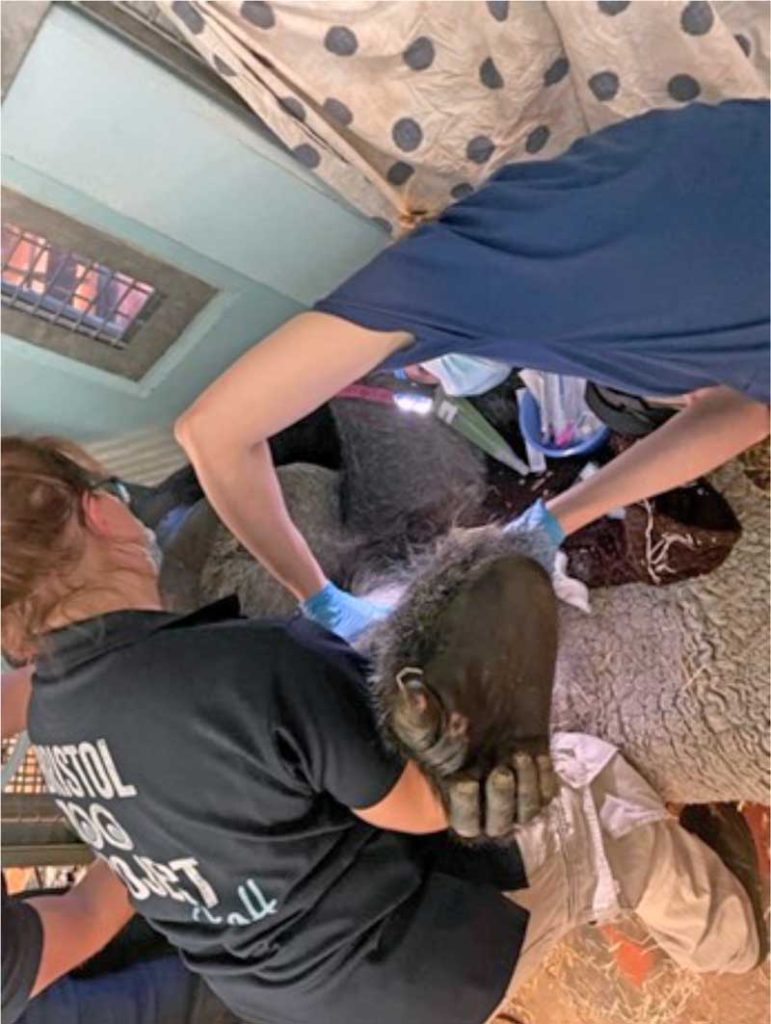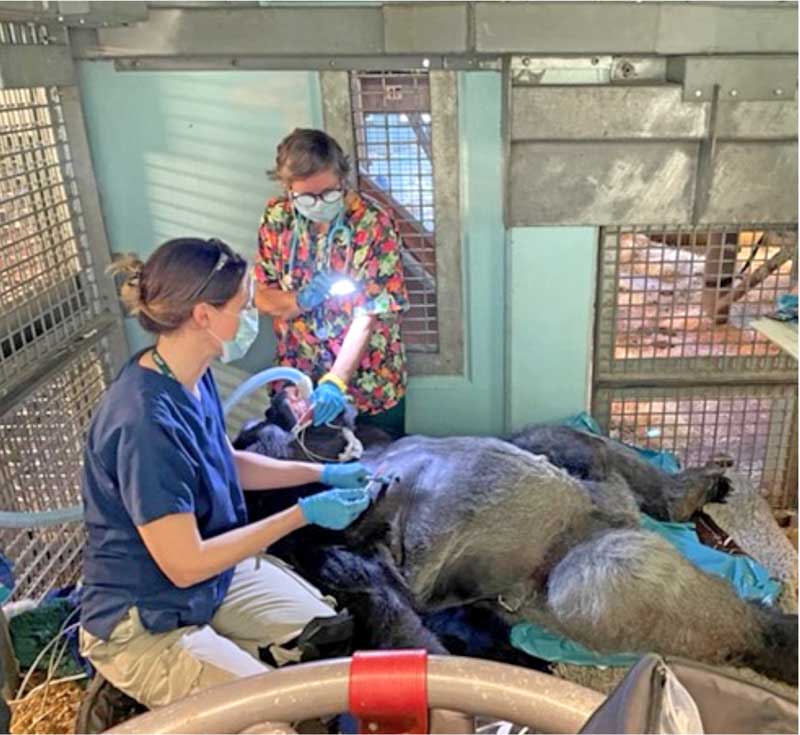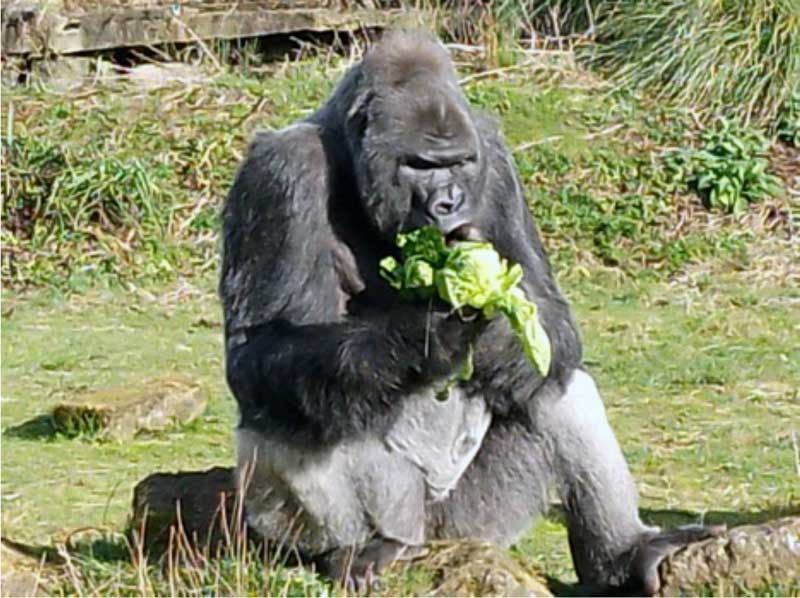10 Apr 2025
Helen Harris BScHons, DipVNZS, CertAPVN(Zoo), RVN describes her role taking care of an array of interesting animals and why it puts a smile on her face.

Image: Stephane Bonnel / Adobe Stock
My typical morning as a zoo RVN starts with checking any in-patients or animals in quarantine and giving any medication, followed by cleaning and feeding. This is all logged on the hospital/meds sheets and the duty vet will then be updated (Figures 1 to 3).
This is followed by a brief walk around the zoo to check in with keepers and check on animals to see if all is well or if there are any concerns to report to the veterinary surgeons for that day.
There is just a peace you feel walking around observing the animals starting their morning routines. Being this close and involved with such magnificent animals you cannot help but have a smile on your face to start your day. From cheetahs exploring and giraffes stripping branches with their flexible tongues, to gorillas playing and foraging.



If anaesthetics or other procedures are planned, I would then set up in the same way we would in general practice, preparing theatre for operations and minor procedures, conducting checks on the anaesthetic machine and setting up the prep area, radiography and the lab area.
Keepers can train some of our zoo animals to present themselves for certain checks or procedures, such as blood sampling. However, often a full anaesthetic is required for health checks. Most species have three-yearly routine health checks, although we will see elderly animals or those with chronic health conditions more often.
In addition, we conduct pre-export health checks on animals going to other zoos and young animals will typically get a first health check between 6 to 12 months of age. Sometimes, this is the first opportunity to confirm the sex, and we will often microchip them and get radiographs and biochemistry/haematology results so that we have normal values for that particular animal, which are useful if they get sick later in life.
Today, though, we have an extremely exciting procedure to complete. This is carried out on section, within the animal’s habitat, as he is too big to easily move across the zoo to the clinic.
All equipment and kit needed for the procedure is sorted and clearly labelled for easy access. Blood sampling equipment, monitors, fluids, vet beds and the anaesthetic machine with oxygen generator, dental and scanning equipment are all required. Equipment cannot be taken down in advance or the animals may become suspicious and less likely to cooperate, so everything is kept out of sight until it is needed (Figure 4).

Today’s procedure is a health check on our male silverback gorilla, called Jock, who is 41 years old and weighs in at 177kg. He is just magnificent.
He is trained by his keepers for hand injection, which allowed a smooth induction with Zoletil (tiletamine and zolazepam) and medetomidine. This combination took about 10 minutes to take effect.
After the head vet had checked he was successfully anaesthetised, and it was safe to enter, he was moved by a large group of us on to bales of straw. He was positioned in dorsal recumbency with his thorax slightly elevated to reduce pressure from his abdomen and help him ventilate better. This was done using rolled up blankets (Figure 5).

We are lucky enough to be able to call on a whole range of specialists to assist us with more complex procedures, and for this one the zoo’s veterinary team was joined by veterinary dentist Martin Brice, imaging specialist Nic Hayward, Aimee Drane from the International Primate Heart Project and even specialists in colonoscopy from the Bristol Royal Infirmary (BRI).
We were also joined by an anaesthesia resident from the University of Bristol’s vet school to assist our experienced long-serving zoo RVN, Teresa, during the procedure. I was to assist the vets as needed and observe and learn how to adapt my skills as an RVN to working with gorillas.
Jock was intubated using a size 13 endotracheal tube that was connected to the circle circuit so that he could be maintained on isoflurane if needed. Cardiovascular disease is prevalent in great apes, especially male gorillas, and chimpanzees too, so we invited Dr Drane to carry out a full cardiovascular assessment, which included echocardiography.
The cardiac scan took place first and before the use of volatile anaesthetic agents, to minimise the effect on the heart and allow a more accurate scan.
Once the scan was finished, Jock was then maintained on 2% to 3% isoflurane in oxygen.
An IV catheter was placed in the brachial vein for venous access and fluid therapy. Capnography and pulse oximetry were used throughout the anaesthetic procedure; heart rate was monitored at a range of 50 to 92 beats per minute, respiration rate was 40 to 60 breaths per minute and Sp02 remained at 90% to 99% oxygen saturation. Rectal temperature was also monitored. Blood pressure monitoring was successfully achieved by using a small animal cuff on Jock’s finger.
Specialists from the BRI performed a colonoscopy and took a biopsy to check for colitis due to Jock’s history of intermittent diarrhoea (Figure 6).

I assisted with blood sampling, one of the highlights of the day; 35ml was taken to evaluate biochemistry, haematology, vitamin D and for biobanking (Figure 7).

Dental checks were conducted, radiographs were taken, and a comparative intradermal test for tuberculosis test was completed (Figure 8). This was done on the chest so that any reactions would be easily visible, and keepers could note results at 24 to 48 and 72-hour intervals. A full health check from head to toe was performed and his nails were trimmed as needed as they can get quite long.

Finally, a COVID booster was given – Jock had already been hand injected with his flu vaccine prior to the anaesthetic to reduce the risk of infection, while having close human interaction.
At the end of the procedure, isoflurane was turned off, the machine disconnected, and he was placed on the floor in the recovery position. Everyone was then asked to vacate the area, and the reversal drug was given. Once he was extubated, the slide to the den was closed.
He gained control of his head after about five minutes and was up in sternal recumbency within half an hour. Once the procedure had concluded everything was then moved as quickly as possible out of the gorilla house so the rest of the troop could be let back in and reintroduced to Jock once he had recovered.
Within a few hours he was up and eating and by the next morning he was bright, eating and drinking and taking his medication as normal.
My shift then ends with a debriefing and cleaning/sorting of the equipment ready for its next use.
Next day I am then lucky enough to watch him foraging for his lunch (Figure 9).

Being this close to such a magnificent animal and being able to collaborate with a fantastic team of specialists to collect data and provide the best health care for them in captivity, is just mind blowing and I feel privileged to be able to work alongside such amazing animals, day to day.
Bristol Zoological Society is a conservation and education charity that owns and operates Bristol Zoo Project.
The zoo is home to animals from around the world, including giraffe, red panda, cheetah, zebra, deer, ostrich, Socorro doves, gelada baboons and lemurs. It also includes the award-winning Bear Wood, which is home to brown bears, lynxes, wolverines and wolves.